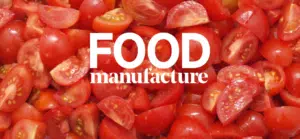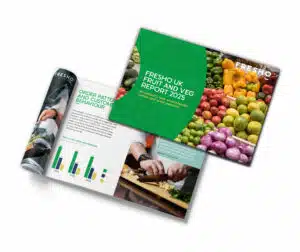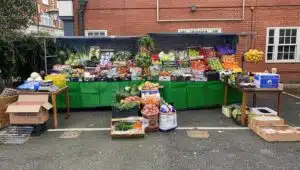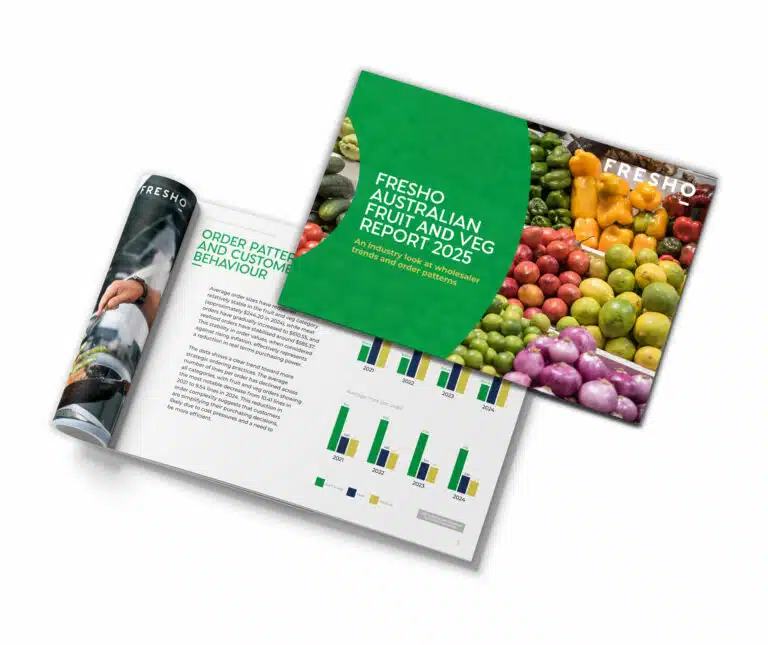Australia, with its vast size and relatively small population, has become renowned for its horticultural industry. The country’s diverse soil and climate allow for the production of a wide range of fresh food all year round. This capability has firmly established Australia’s reputation as a major player in the global market for fresh produce.
The food industry is integral to Australia’s economic and social prosperity, consistently accounting for 20 per cent of the domestic manufacturing sales and service income.
But with mounting cost pressures, rising commodity, energy prices and a tight labour market, consumers are seeing their favourite menu items jump in price. The cost of living crisis has worsened with inflation hitting a new 32-year high of 7.8%.
Let’s delve into the space between the supplier and the restaurant, uncover the impact of the cost crisis on wholesalers in the food industry and discover the strategic measures necessary to differentiate and excel in a highly competitive and saturated market.
The global cost of living crisis: what does this mean for Australian restaurants and distributors?
The severe effects of the cost of living is being felt by all players in the food industry, from distributors to venues. Pubs and restaurants all over Australia are feeling the heat with nearly one-third of Australian’s treating dining out as their priority cut-back.
To avoid closure, restaurants are desperate to cut costs. As a result, food wholesalers find themselves in cut-throat competition to offer the most competitive prices and maintain their relationships with these struggling businesses. However, the pressure doesn’t stop there, there is the expectation of offering easy ordering systems and exceptional customer service.
With fewer orders, you may run the risk of economies of scale diminishing and profits facing a devastating hit.
How can Australian distributors persevere?
While decreasing prices is important given the circumstances, restaurants still want to be associated with the best.
Australia’s best fresh produce wholesalers ensure customers are fighting for your business and not going elsewhere.
3 ways to be the best:
1. Competitive Prices
As the fresh produce industry in Australia flourishes, with 1,544 wholesalers and a workforce of 12,194 in the fruit and vegetable industry alone, restaurants are actively seeking cost-effective options. With projected growth over the next five years, wholesalers who offer competitive prices are in high demand, creating pressure on wholesalers to improve business efficiency in order to meet the pricing demands of their customers.
Wholesalers are now forced to seek ways to create business efficiencies to provide the competitive pricing customers are demanding.
Among the most effective cost cutting solutions is technology. In fact, 85% of businesses rethought their work processes post-pandemic, and those that implemented automation saw increased productivity, cost reductions, accuracy and customer satisfaction improvements. Therefore, by leveraging technology fresh produce distributors can also benefit from these improvements.
Automating manual processes with tech can be the long-term strategy to reduce costs for distributors. Tasks ranging from order entry to invoicing, are significantly laborious. By mitigating these labour costs with technology automation, the business can offer lower prices to customers as the cost to serve becomes less.
Ultimately, being a cost leader while maintaining product quality will simultaneously drive sales and demonstrate your brand’s superiority.
2. Product Range
Diversifying products is important. However, without showcasing them, it is redundant. This can result in sunken costs as produce is wasted because chefs don’t know what is available.
Online ordering platforms can showcase product range and specials. With the ability to add product notes and specific requirements it gives a layer of personalisation. This is an added bonus for chefs who take pride in making their menus unique. Wholesalers that use technology like this can stand out and offer products specific to chefs.
Fresho is a software company working within this space. Its functionality for both chef and distributor makes for a seamless user experience. Frank Theodore, General Manager of GetFish says:
"All our chefs saw the benefits of Fresho."
3. Reliability & Exceptional Customer Service
Regardless of the industry, customer service is imperative. Maintaining a good relationship with customers reduces customer churn.
Communication is not just part of customer service; it is the most important part of customer service.
This is why it’s important to give customers a simple and efficient platform to communicate. Not only does this promote transparency between the two parties, but Fresho’s platform is also easy-to-use delivering the high-level customer service chefs are asking for.
With restaurants and wholesalers easily able to keep track of orders; accountability is maintained throughout the order-to-invoice process. It prevents product disputes and creates a platform for successful partnerships.
"Having an online portal such as Fresho shows professionalism"
Joe, General Manager, Fruitique
Fresho offers wholesalers the option of card payments, allowing wholesalers to have their owed payments automatically deducted from customer cards when they’re due. Read more about the importance of how card payments can enhance healthy cash flow in How to avoid the cashflow killer. With this functionality, restaurants are given more breathing room and the relationships become more fulfilling.
Ben English, Marrfish UK operations director, speaks about the benefits of this feature
What next?
The challenge of becoming the best Australian fresh produce wholesaler is daunting, but with the right strategy and tools, it’s possible to succeed and even thrive in these uncertain times.
Discover how Fresho could potentially benefit your business by booking a Fresho demo today.
“Fresho makes it so easy for me to customise what I order so I get exactly what I need, when I want it”.











